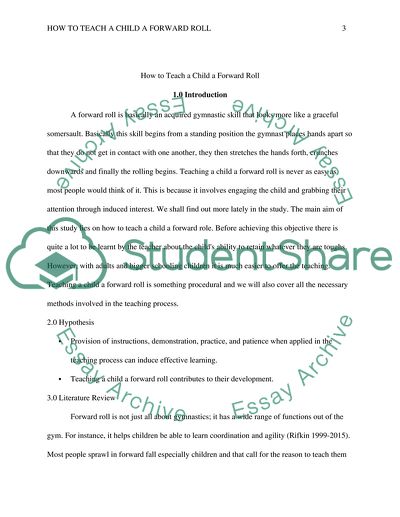Cite this document
(How to Teach a Child a Forward Roll Term Paper Example | Topics and Well Written Essays - 2000 words, n.d.)
How to Teach a Child a Forward Roll Term Paper Example | Topics and Well Written Essays - 2000 words. Retrieved from https://studentshare.org/education/1876310-how-to-teach-a-child-a-forward-roll
How to Teach a Child a Forward Roll Term Paper Example | Topics and Well Written Essays - 2000 words. Retrieved from https://studentshare.org/education/1876310-how-to-teach-a-child-a-forward-roll
(How to Teach a Child a Forward Roll Term Paper Example | Topics and Well Written Essays - 2000 Words)
How to Teach a Child a Forward Roll Term Paper Example | Topics and Well Written Essays - 2000 Words. https://studentshare.org/education/1876310-how-to-teach-a-child-a-forward-roll.
How to Teach a Child a Forward Roll Term Paper Example | Topics and Well Written Essays - 2000 Words. https://studentshare.org/education/1876310-how-to-teach-a-child-a-forward-roll.
“How to Teach a Child a Forward Roll Term Paper Example | Topics and Well Written Essays - 2000 Words”, n.d. https://studentshare.org/education/1876310-how-to-teach-a-child-a-forward-roll.


